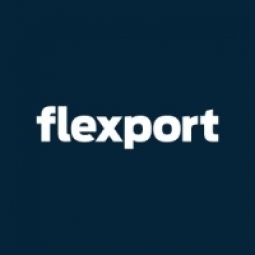Technology Category
- Functional Applications - Warehouse Management Systems (WMS)
- Platform as a Service (PaaS) - Application Development Platforms
Applicable Industries
- Marine & Shipping
- Transportation
Applicable Functions
- Logistics & Transportation
- Procurement
Use Cases
- Picking, Sorting & Positioning
- Supply Chain Visibility
Services
- System Integration
About The Customer
Gerber is a leading manufacturer of both commercial and residential plumbing fixtures. Founded in 1932 and headquartered just outside of Chicago in Woodridge, Illinois, Gerber imports thousands of container shipments a year from its suppliers in China and Mexico into the United States. Once they’ve cleared customs, Gerber’s products are moved through its distribution centers and directly to customers across North America. The demand for Gerber’s products ebbs and flows, and the company strives to maintain as little footprint as possible in order to keep costs low for buyers.
The Challenge
Gerber, a leading manufacturer of commercial and residential plumbing fixtures, faced significant challenges in managing its supply chain. With the majority of its supply shipping over the ocean, maintaining visibility of the supply chain to manage customer expectations and warehouse staffing requirements was a constant issue. Gerber imports thousands of container shipments a year from its suppliers in China and Mexico into the United States, and the demand for its products fluctuates. The company also sought greater visibility into what was driving its accessorial costs to optimize performance on the road and in its warehouses. Gerber's U.S. Transportation Manager, RoxAnne Thomas, described operating the company’s supply chain as a continuous balancing act of supply and demand, with the goal of maintaining as little footprint as possible to keep costs low for buyers.
The Solution
Gerber partnered with Flexport, leveraging its advanced technology and data analytics platform to connect all parties in its supply chain and keep them informed in real time. This provided Gerber with the visibility and control it sought over its inventory, as well as higher levels of personal service at both origin and destination. Flexport also helped Gerber develop warehouse and trucking applications to drive even deeper visibility, assure strong vendor performance, and reduce logistics costs from end to end. Flexport's cloud-based platform connected all stakeholders across Gerber’s supply chain, including its logistics team, suppliers in China, domestic warehouse teams, and local trucking partners. Flexport also helped integrate the platform with Gerber’s enterprise resource planning (ERP) system, enabling automatic transmission of shipment milestones and providing Gerber with real-time visibility into the estimated arrival of its containers.
Operational Impact
Quantitative Benefit

Case Study missing?
Start adding your own!
Register with your work email and create a new case study profile for your business.
Related Case Studies.

Case Study
Airport SCADA Systems Improve Service Levels
Modern airports are one of the busiest environments on Earth and rely on process automation equipment to ensure service operators achieve their KPIs. Increasingly airport SCADA systems are being used to control all aspects of the operation and associated facilities. This is because unplanned system downtime can cost dearly, both in terms of reduced revenues and the associated loss of customer satisfaction due to inevitable travel inconvenience and disruption.

Case Study
IoT-based Fleet Intelligence Innovation
Speed to market is precious for DRVR, a rapidly growing start-up company. With a business model dependent on reliable mobile data, managers were spending their lives trying to negotiate data roaming deals with mobile network operators in different countries. And, even then, service quality was a constant concern.

Case Study
Digitize Railway with Deutsche Bahn
To reduce maintenance costs and delay-causing failures for Deutsche Bahn. They need manual measurements by a position measurement system based on custom-made MEMS sensor clusters, which allow autonomous and continuous monitoring with wireless data transmission and long battery. They were looking for data pre-processing solution in the sensor and machine learning algorithms in the cloud so as to detect critical wear.

Case Study
Cold Chain Transportation and Refrigerated Fleet Management System
1) Create a digital connected transportation solution to retrofit cold chain trailers with real-time tracking and controls. 2) Prevent multi-million dollar losses due to theft or spoilage. 3) Deliver a digital chain-of-custody solution for door to door load monitoring and security. 4) Provide a trusted multi-fleet solution in a single application with granular data and access controls.

Case Study
Vehicle Fleet Analytics
Organizations frequently implement a maintenance strategy for their fleets of vehicles using a combination of time and usage based maintenance schedules. While effective as a whole, time and usage based schedules do not take into account driving patterns, environmental factors, and sensors currently deployed within the vehicle measuring crank voltage, ignition voltage, and acceleration, all of which have a significant influence on the overall health of the vehicle.In a typical fleet, a large percentage of road calls are related to electrical failure, with battery failure being a common cause. Battery failures result in unmet service agreement levels and costly re-adjustment of scheduled to provide replacement vehicles. To reduce the impact of unplanned maintenance, the transportation logistics company was interested in a trial of C3 Vehicle Fleet Analytics.

Case Study
3M Gains Real-Time Insight with Cloud Solution
The company has a long track record of innovative technology solutions. For example, 3M helps its customers optimize parking operations by automating fee collection and other processes. To improve support for this rapidly expanding segment, 3M needed to automate its own data collection and reporting. The company had recently purchased the assets of parking, tolling, and automatic license plate reader businesses, and required better insight into these acquisitions. Chad Reed, Global Business Manager for 3M Parking Systems, says, “With thousands of installations across the world, we couldn’t keep track of our software and hardware deployments, which made it difficult to understand our market penetration.” 3M wanted a tracking application that sales staff could use to get real-time information about the type and location of 3M products in parking lots and garages. So that it could be used on-site with potential customers, the solution would have to provide access to data anytime, anywhere, and from an array of mobile devices. Jason Fox, Mobile Application Architect at 3M, upped the ante by volunteering to deliver the new app in one weekend. For Fox and his team, these requirements meant turning to the cloud instead of an on-premises datacenter. “My first thought was to go directly to the cloud because we needed to provide access not only to our salespeople, but to resellers who didn’t have access to our internal network,” says Fox. “The cloud just seemed like a logical choice.”







